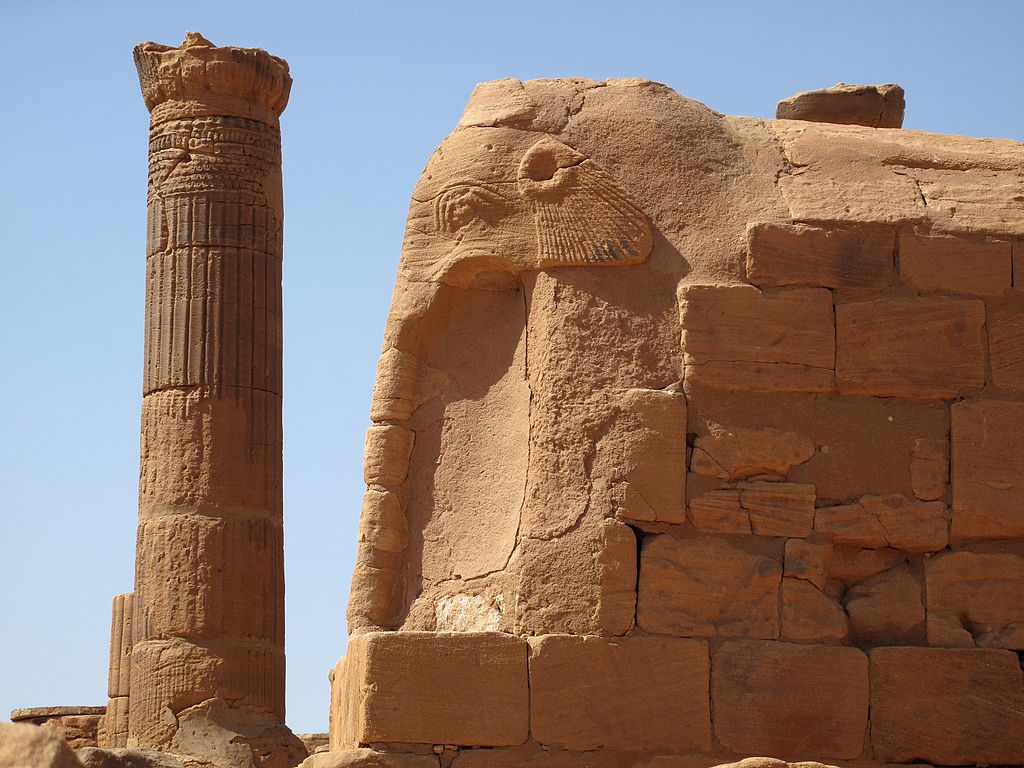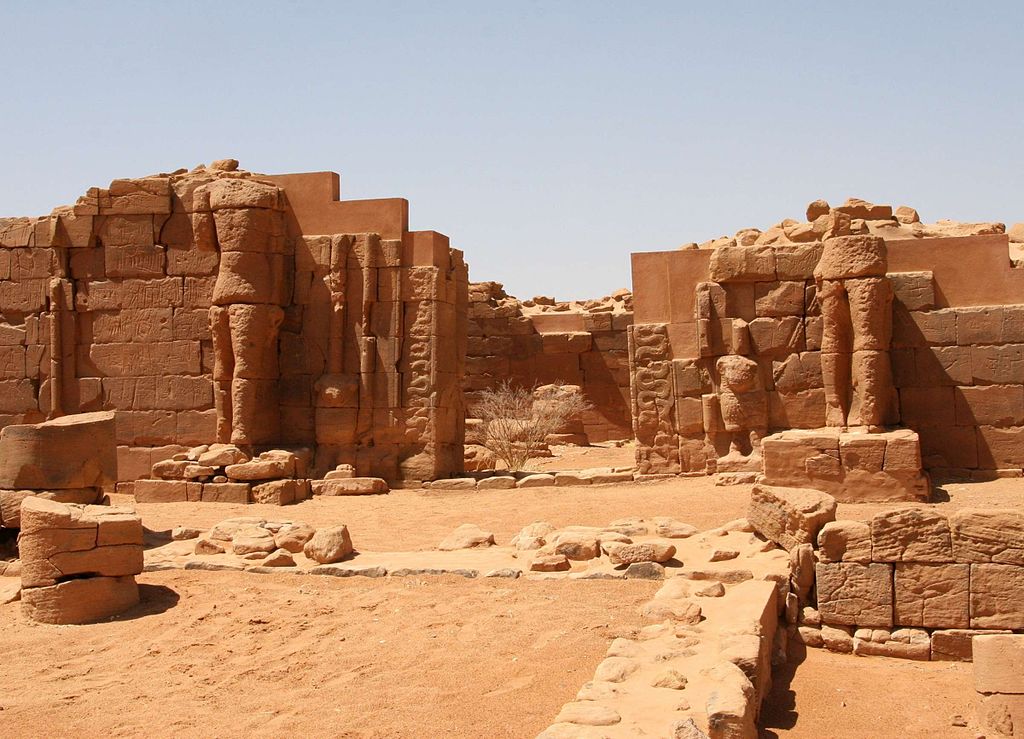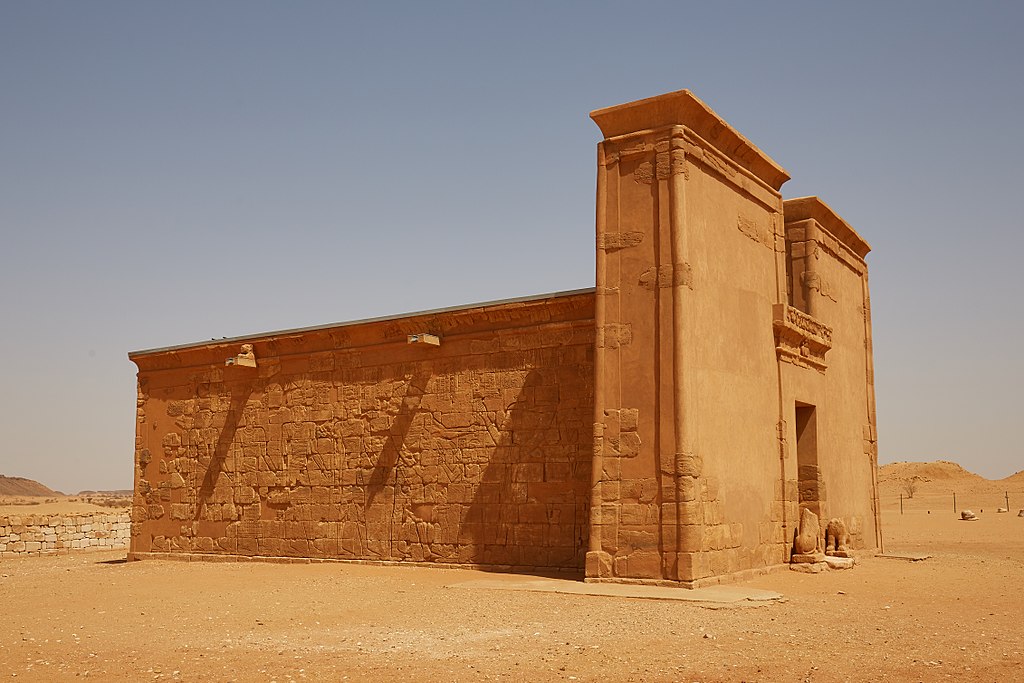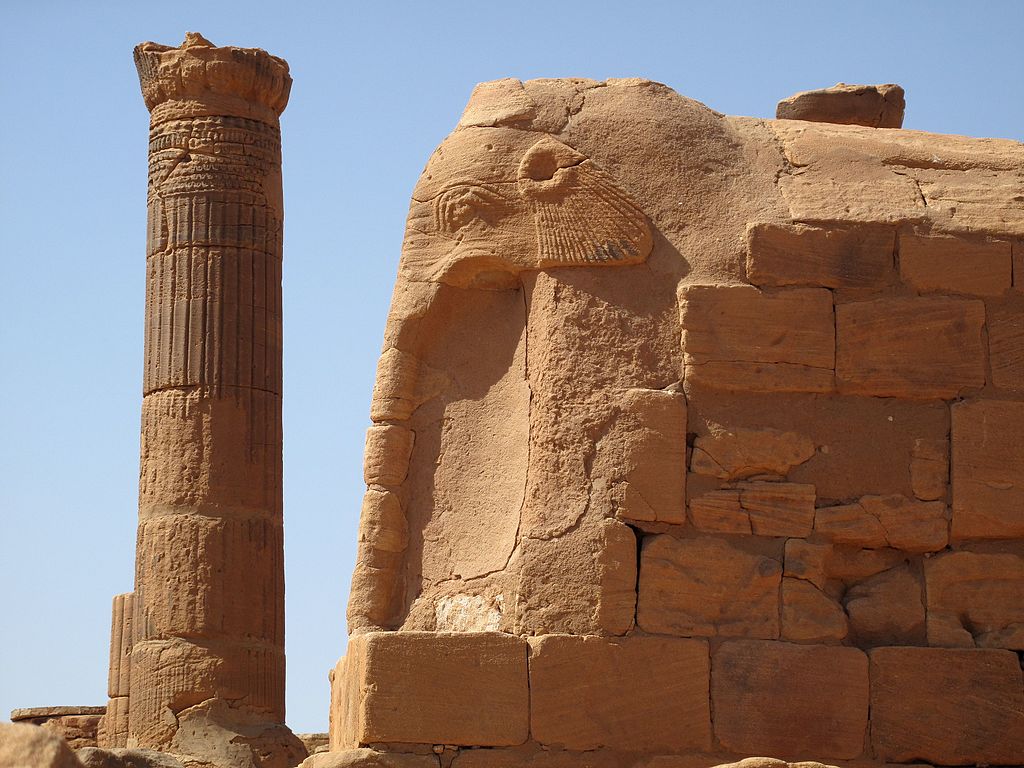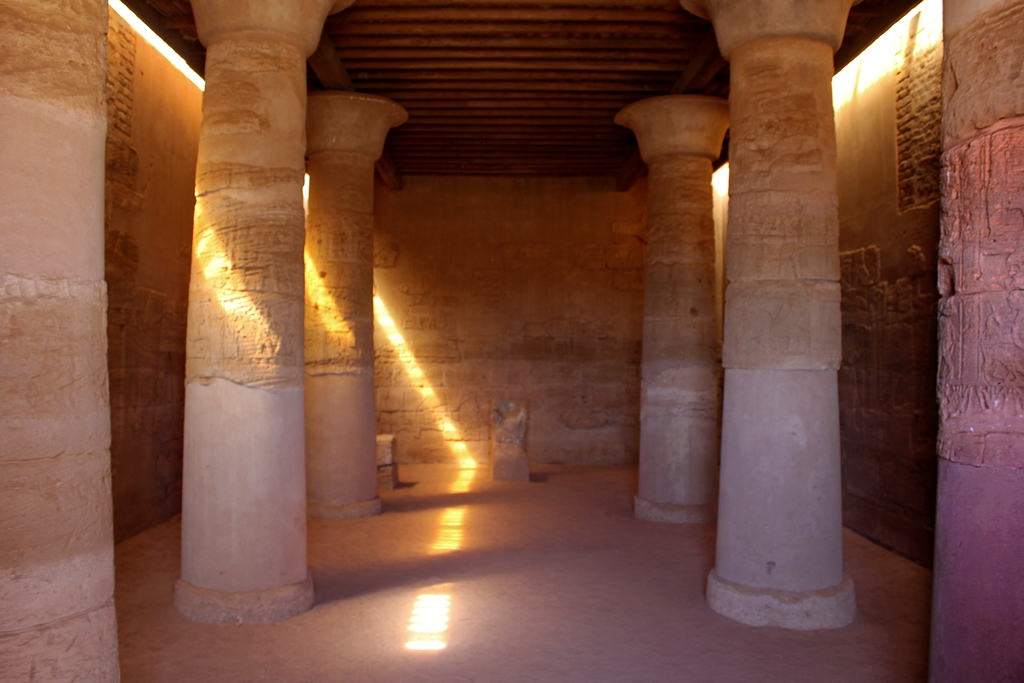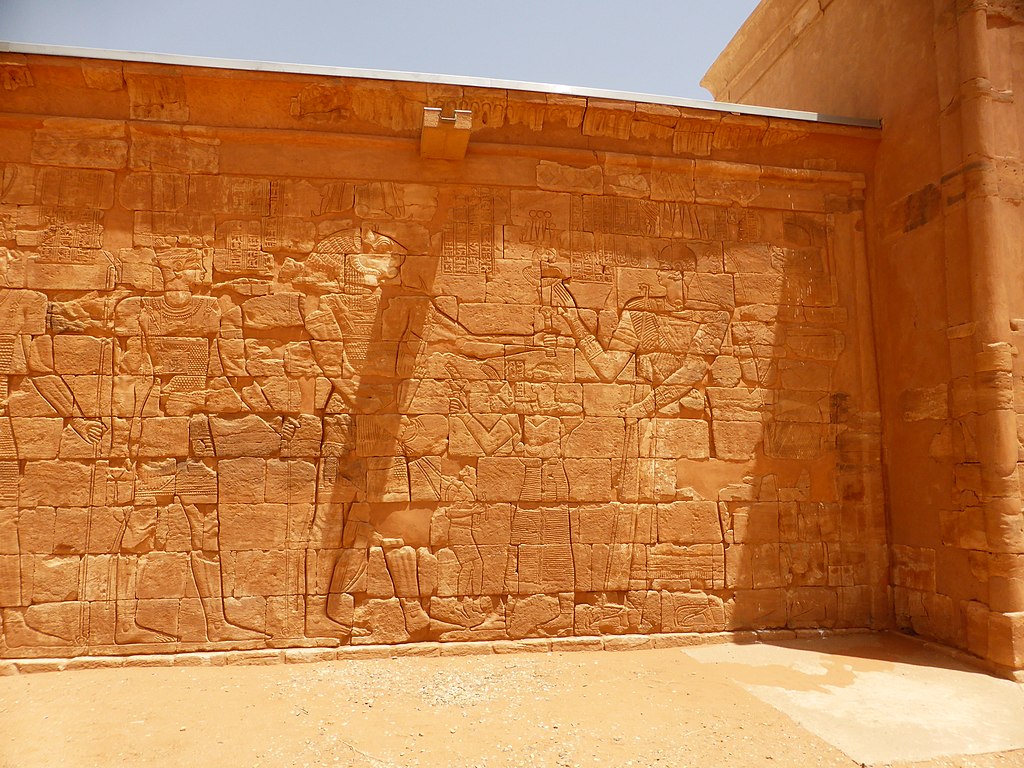Musawwarat
Key Points
- Musawwarat es-Sufra ( Meroitic: Aborepi), also known as Al-Musawarat Al-Sufra, is a large Meroitic temple complex in modern Sudan, dating back to the early Meroitic period of the 3rd century BC. It is located in a large basin surrounded by low sandstone hills in the western Butana, 180 km northeast of Khartoum, 20 km north of Naqa and approximately 25 km south-east of the Nile. Its MGRS coordinates: 36QWD3477214671.
- With Meroë and Naqa it is known as the Island of Meroe, and was listed as a UNESCO World Heritage Site in 2011.
- Constructed in sandstone, the main features of the site include the Great Enclosure, the Lion Temple of Apedemak and the Great Reservoir. Most significant is the number of representations of elephants, suggesting that this animal played an important role at Musawwarat es-Sufra.
- The Lion Tenple is a single-chambered rectangular 14.21 m in length, 9.13 m in width and 4.7 m in height temple with pylon and six columns made of drums. Erected by King Arnekhamani and dedicated to Apedemak the temple beers inscriptions in Egyptian hieroglyphs and representations of elephants and lions on the rear inside wall as well as reliefs of Apedemak depicted as a three-headed god on the outside walls.
- The Great Enclosure is the main structure of the site. Much of the large labyrinth-like building complex, which covers approximately 45,000 m2, was erected in the third century BC. According to Hintze, "the complicated ground plan of this extensive complex of buildings is without parallel in the entire Nile valley". The maze of courtyards includes three (possible) temples, passages, low walls, preventing any contact with the outside world, about 20 columns, ramps and two reservoirs.
- There were many sculptures of animals, such as elephants and most of the walls of the complex bear graffiti and masons’ or pilgrims' marks both pictorial and in Meroitic or Greek script. The scheme of the site is, so far, without parallel in Nubia and ancient Egypt, and there is some debate about the purpose of the buildings, with earlier suggestions including a college, a hospital, and an elephant-training camp. According to the scholar Basil Davidson, at least four Kushite queens — Amanirenas, Amanishakheto, Nawidemak and Amanitore — probably spent part of their lives in Musawwarat es-Sufra.
- The Great Reservoir is a Hafir (an artificially constructed water basin) to retain as much as possible of the rainfall of the short, wet season. It is 250 m in diameter and excavated 6.3 m into the ground.
X
External Links
Amanirenas
Amanirenas (also spelled Amanirena) was a queen of the Meroitic Kingdom of Kush. She reigned from about 40 BC to 10 BC. She is one of the most famous kandakes, because of her role leading Kushite armies against the Romans in a war that lasted five years, from 27 BC to 22 BC. After an initial victory when the Kushites attacked Roman Egypt, they were driven out of Egypt by Gaius Petronius and the Romans established a new frontier at Hiere Sycaminos (Maharraqa).
This page uses materials from Wikipedia available in the references. It is released under the Creative Commons Attribution-Share-Alike License 3.0.
References Wikipedia contributors. (2019, January 8). Musawwarat es-Sufra. In Wikipedia, The Free Encyclopedia. Retrieved 17:07, March 16, 2019, from Link
www.musawwarat.com/chronology Link
UNESCO Island of Meroe. Link
UNESCO Nomination document p.43.
Gilda Ferrandino and Matteo Lorenzini; 3D Reconstruction of the Lion Temple at Musawwarat es Sufra: 3D model and domain ontologies; in: The Kushite World (2015). Proceedings of the 11th International Conference for Meroitic Studies;Vienna, 1-4 September 2008.
The Great Enclosure Link
Hintze, Fritz (1978). The Kingdom of Kush: The Meroitic Period. The Brooklyn Museum. pp. 89–93.
Zamani Project
Google Books Sudan: The Bradt Travel Guide p.131-2. Link
Graffiti of the Great Enclosure Link
Basil Davidson, Old Africa Rediscovered, Prentice-Hall 1970.
Claudia Näser; The Great Hafir at Musawwarat as-Sufra. Fieldwork of the Archaeological Mission of Humboldt University Berlin in 2005 and 2006. On: Between the Cataracts. Proceedings of the 11th Conference of Nubian Studies. Warsaw University, 27 August - 2 September 2006; In: Polish Centre of Mediterranean Aerchaeology University of Warsaw. PAM Supplement Series 2.2./1-2.
